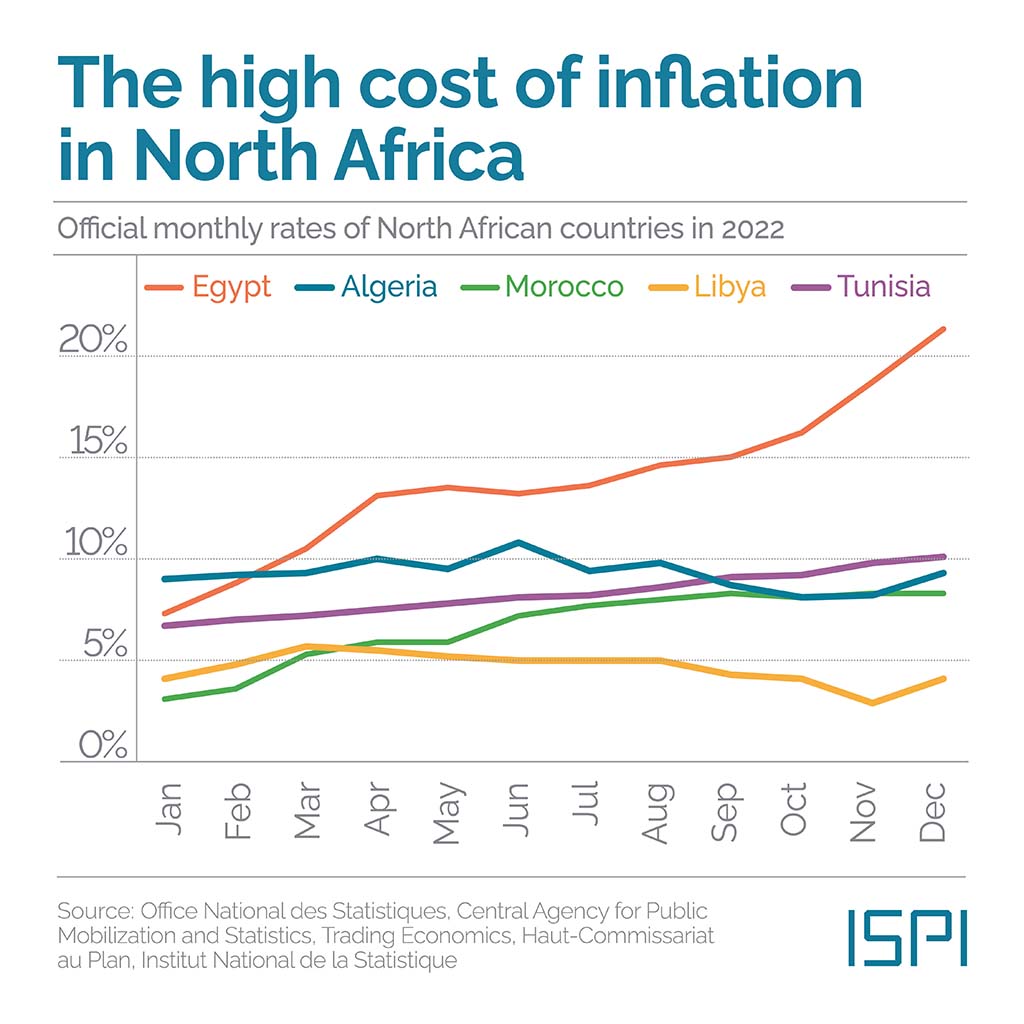Report on UK Migration Trends and Policy Alignment with Sustainable Development Goals
Executive Summary
This report analyses recent data on migration to the United Kingdom and examines new government policies through the framework of the United Nations Sustainable Development Goals (SDGs). Provisional data from the Office for National Statistics (ONS) indicates a significant decrease in net migration in 2024. Concurrently, the UK government has introduced a suite of policy changes aimed at further managing immigration levels. These developments have direct implications for several SDGs, most notably SDG 8 (Decent Work and Economic Growth), SDG 10 (Reduced Inequalities), SDG 3 (Good Health and Well-being), and SDG 4 (Quality Education).
Analysis of 2024 Migration Statistics
Net Migration Figures
Provisional ONS figures for the year ending December 2024 show a substantial shift in migration patterns. The data indicates a net migration figure of 431,000, representing a near 50% reduction from the estimated 860,000 recorded in the 12 months to December 2023. This change results from an estimated 948,000 long-term immigrants arriving and 517,000 emigrants departing. This trend reflects a move towards more managed migration flows, a key component of SDG 10 (Reduced Inequalities), specifically Target 10.7, which calls for orderly, safe, and responsible migration.
Composition of Migrant Population
The demographic and national breakdown of immigrants in the year to December 2024 is as follows:
- Non-EU Nationals: 766,000 (81% of total arrivals). The majority (83%) were of working age (16-64), with Indian nationals being the most common group arriving for work or study. This highlights the UK’s reliance on global talent to fuel its economy, aligning with SDG 8 (Decent Work and Economic Growth).
- EU+ Nationals: 122,000 (13% of total arrivals). This cohort also saw a net outflow, with 96,000 more EU nationals leaving the UK than arriving.
- British Nationals: 60,000 (6% of total arrivals), with a net outflow of approximately 17,000.
UK Government Immigration Policy Framework and SDG Implications
Overview of New Policy Measures
The government has outlined new measures intended to manage immigration levels, which intersect with multiple SDGs. These policies aim to balance economic needs with sustainable population management.
- Enhanced Skill and Language Requirements: Requiring degree-level qualifications for most skilled worker visas and English tests for all applicants and dependants supports the goal of a high-skilled economy (SDG 8) and promotes better integration (SDG 10).
- Increased Salary Thresholds: Raising the minimum salary for a skilled worker visa to £38,700 is designed to increase the economic contribution of migrants, directly targeting SDG 8.
- Revised Graduate Route: Shortening the post-study work period for overseas graduates to 18 months may impact the UK’s competitiveness in attracting global talent, a key aspect of SDG 4 (Quality Education) and SDG 17 (Partnerships for the Goals).
- Focus on Domestic Talent: Encouraging employers to develop the domestic workforce aligns with national objectives under SDG 8 and SDG 4 by promoting lifelong learning opportunities for UK residents.
- Extended Path to Settlement: Increasing the residency requirement for indefinite leave to remain from five to ten years is a significant policy shift impacting long-term integration under SDG 10.
The Points-Based System (PBS) and Salary Rules
The PBS is the primary mechanism for managing skilled migration. The increase of the general salary threshold to £38,700 aims to ensure that migration is beneficial to the national economy (SDG 8). However, this policy must be carefully monitored to avoid exacerbating labour shortages in essential but lower-paid sectors, which could negatively impact SDG 3 (Good Health and Well-being) and SDG 11 (Sustainable Cities and Communities).
The Immigration Salary List (formerly the Shortage Occupation List) provides a crucial exception, allowing employers in key sectors to recruit talent at a lower salary threshold. This list is vital for filling vacancies that support critical national infrastructure and services, contributing to SDG 9 (Industry, Innovation and Infrastructure) and SDG 3.
Visa Category Analysis in the Context of SDGs
Health and Social Care Visas
Visas for health and social care workers remain a cornerstone of UK immigration policy, directly supporting SDG 3 (Good Health and Well-being). These roles are exempt from the highest salary thresholds, acknowledging their critical societal function. The continued recruitment of overseas healthcare professionals is essential for the resilience of the National Health Service and the social care sector.
Family Visas
Family visas are integral to upholding the principles of SDG 10 (Reduced Inequalities) and SDG 16 (Peace, Justice and Strong Institutions) by allowing for family reunification. These policies support the social integration and well-being of migrants, fostering stable communities. The rules governing these visas seek to balance this humanitarian objective with immigration controls.
Student and Graduate Visas
The UK’s ability to attract international students is a key contributor to SDG 4 (Quality Education), positioning the nation as a global leader in higher education. This influx fosters international collaboration (SDG 17) and drives innovation. Policy changes to the graduate visa route require careful assessment to ensure the UK remains an attractive destination for students who contribute both academically and economically.
Seasonal Worker Visas
The seasonal worker visa scheme, with a quota of 45,000 for 2025 (43,000 for horticulture and 2,000 for poultry), is fundamental to the UK’s food security and agricultural sector. This directly supports SDG 2 (Zero Hunger) by ensuring a stable food supply chain and provides vital employment opportunities, contributing to SDG 8 (Decent Work and Economic Growth), both for the UK economy and the workers’ home countries.
SDGs Addressed in the Article
-
SDG 3: Good Health and Well-being
The article touches upon the recruitment of healthcare professionals by mentioning that jobs in “health and social care” are exempt from the increased salary thresholds for visas. This highlights the UK’s policy of using international migration to address domestic shortages in its health workforce, which is directly related to maintaining a robust healthcare system.
-
SDG 4: Quality Education
The article discusses “student and graduate visas” and changes to the rules for overseas graduates, such as reducing the time they can remain in the UK post-study. This directly impacts the flow of international students and the attractiveness of the UK as a destination for higher education.
-
SDG 8: Decent Work and Economic Growth
The core of the article revolves around labor migration. It details the “points-based system,” “skilled worker visas,” salary thresholds, and special provisions for sectors with labor shortages like horticulture and poultry (“seasonal worker visas”). These policies are designed to manage the labor market, fill vacancies, and ensure migrant workers meet specific economic criteria, all of which are central to SDG 8.
-
SDG 10: Reduced Inequalities
This is the most prominent SDG in the article. The entire piece is an analysis of the UK’s migration policies. It describes the government’s efforts to manage and control the flow of people, which directly relates to the goal of facilitating orderly, safe, and responsible migration through well-managed policies.
Identified Targets and Indicators
Specific Targets
-
Target 3.c: Substantially increase health financing and the recruitment, development, training and retention of the health workforce in developing countries…
The article implies a connection to this target by stating that “health and social care” jobs are exempt from the higher salary threshold of £38,700. This suggests an active policy to recruit foreign health workers to fill domestic shortages, which has a direct effect on the global health workforce, particularly the human resources in the workers’ countries of origin.
-
Target 4.b: By 2020, substantially expand globally the number of scholarships available to developing countries… for enrolment in higher education… in developed countries.
While not mentioning scholarships, the article’s focus on “student and graduate visas” and the rules for “overseas graduates” directly pertains to the movement of people for higher education. The policies discussed, such as shortening the post-study work period, influence the flow of international students, which is the context of this target.
-
Target 8.8: Protect labour rights and promote safe and secure working environments for all workers, including migrant workers…
The article describes a highly regulated system for labor migration, including the “points-based system,” minimum salary thresholds, and specific visa categories like the “skilled worker visa” and “seasonal worker visa.” These mechanisms are forms of state-managed policy intended to formalize migrant labor and provide a secure (though restrictive) working environment.
-
Target 10.7: Facilitate orderly, safe, regular and responsible migration and mobility of people, including through the implementation of planned and well-managed migration policies.
This target is central to the article. The text is a detailed exposition of the UK’s “planned and well-managed migration policies.” It outlines specific rules, such as the points system, salary thresholds (“an increase of nearly 50% from the previous £26,200 minimum”), visa quotas (“45,000 for 2025” for seasonal workers), and qualification requirements, all of which are instruments of a managed migration policy.
Mentioned or Implied Indicators
-
Indicator 10.7.1: Recruitment cost borne by employee as a proportion of monthly income earned in country of destination.
The article explicitly mentions costs that migrant workers must bear. It states, “The standard fee for a skilled visa is usually between £719 and £1,639. Applicants also have to pay a healthcare surcharge.” This data provides a direct measure of the recruitment costs for employees.
-
Indicator 10.7.2: Number of countries with migration policies that facilitate orderly, safe, regular and responsible migration and mobility of people.
The article serves as a case study of one country’s (the UK’s) migration policies. The detailed description of the “points-based system,” the “immigration salary list,” and specific visa rules demonstrates the existence and nature of such policies, which is what this indicator aims to track globally.
-
Implied Indicator: Net migration and population flow statistics.
The article provides several quantitative measures that are used to assess the impact of migration policies. These include: “Net migration to the UK fell almost 50% to 431,000 in 2024,” “An estimated 948,000 people came to the UK,” and “517,000 people left the country.” These figures are direct indicators of population mobility.
-
Implied Indicator: Number of visas issued or available by category.
Progress towards managing migration for specific economic purposes can be measured by visa numbers. The article provides a clear quota for seasonal workers: “The number of visas that can be granted is 45,000 for 2025,” broken down into “43,000 horticulture workers” and “2,000 poultry workers.” This serves as a precise indicator for a specific migration channel.
Summary of Findings
| SDGs | Targets | Indicators |
|---|---|---|
| SDG 3: Good Health and Well-being | Target 3.c: Substantially increase health financing and the recruitment, development, training and retention of the health workforce… |
|
| SDG 4: Quality Education | Target 4.b: …expand globally the number of scholarships… for enrolment in higher education… in developed countries. |
|
| SDG 8: Decent Work and Economic Growth | Target 8.8: Protect labour rights and promote safe and secure working environments for all workers, including migrant workers… |
|
| SDG 10: Reduced Inequalities | Target 10.7: Facilitate orderly, safe, regular and responsible migration and mobility of people, including through the implementation of planned and well-managed migration policies. |
|
Source: bbc.com







